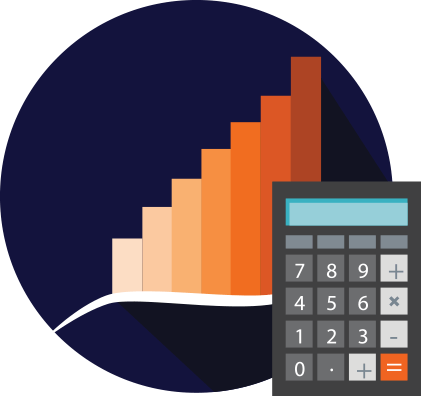Investing is one of the best ways to build wealth — and pass it on to the next generation.
Unfortunately, investing still retains something of an aura of mystery. And many people believe that they need a pretty big chunk of change to get started. Plus, investing seems complex if you’re not a professional.
The good news is that none of that applies anymore. Even if you think you’re broke, you can invest. Here’s how to start investing, no matter how much (or how little) money you have:
Your Company’s Retirement Plan
Does your workplace have a 401(k)? If so, are you signed up?
Your company retirement plan is one of the easiest ways to start investing. With a company retirement plan, your contribution is tax-advantaged and automatically deducted from your paycheck. You don’t actually have to do anything, other than sign up.
If your company offers a match, you can get even more money. That’s free money that your company puts into your retirement account. One of the best things you can do for your future is to make sure you’re contributing enough to receive the maximum possible match. That money will grow over time and benefit you in the long run.
Retirement accounts are investment accounts, and they can be a great way to make sure that you are setting aside money for your future with every. single. paycheck.
Low-Cost Index Funds and ETFs
If you want to learn how to start investing without the need to pick stocks immediately, use index funds or ETFs. Funds are collections of investments that you basically trade as one.
With index funds and ETFs, you can take advantage of instant diversity. A good all-market fund or something like the S&P 500 can give you exposure to a wide swath of the market. Your performance follows how the market does broadly, rather than being based on how good you are at picking stocks.
There are plenty of places where you can open an account with a $0 minimum and start investing in index funds and ETFs with as little as $25. Consider a robo-advisor like Betterment, or Wisebanyan. Even a broker like Ally Invest can be a smart move since you can find plenty of fee-free investments to add to your portfolio — without the need for a lot of money.
You can also use an app like Acorns to help you invest your pocket change in low-cost ETFs. Acorns will round up your purchases, collect the change, and invest as you reach $5 increments. It’s a fairly simple way to get started without having very much money at all.
Fractional Investing
What if you want to learn how to start investing in individual stocks? You don’t need to have money to buy a full share. Brokers like Stockpile help you invest in parts of shares. You can buy a portion of a share, and keep adding to the pile as you go.
Make a list of companies that you use regularly, or that show long-term staying power. Research the companies to see find out how strong they are. Narrow down your list to a few companies. Then, look for ways to buy fractional shares of those stocks and grow your portfolio. You can buy some fractional shares with as little as $5.
How to Start Investing: Consistency is Key
Anytime you want to move forward with your money, consistency is key. Make a point to invest whenever you can. The biggest mistake you can make is to not get started.
When you have money taken from your paycheck and put into a retirement account, that’s the easiest way to move forward. However, you can also have money automatically transferred from your bank account into your investment account.
Most brokers will let you set up automatic plans so you can invest without thinking about it. Putting your finances on automatic like this can be a way to ensure that you’re taking steps to shore up your future.
Finally, don’t forget to increase the amount you set aside as your income grows. You might be broke now, but you won’t be forever. Eventually, you’ll start making more money.
As your finances improve, don’t forget to tweak how much you’re investing. Aim to make it a percentage of your income, rather than a dollar amount. Start by setting aside maybe 5% of your income. Then grow it to 10% of your income. Ultimately, if you can get to the point where you’re saving 20% of your income each month, you’re more likely to meet your long-term goals.
Want to learn more about how to start investing? Take our FREE six-week investing course. You’ll learn the basics of investing, and receive actionable steps to help you start building wealth today.

